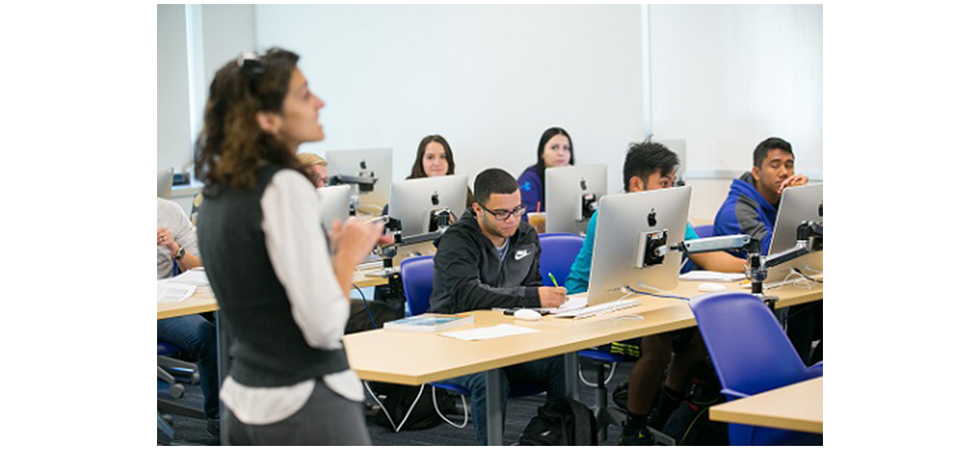High-tech and Flexible Classrooms Inspire Learning

The Tsotsis Family Academic Center, or “TFAC” as students refer to the new learning facility, offers flexible classrooms that provide students the opportunity to learn in a creative and adaptable learning environment, similar to the collaborative feel of modern workspace.
“The academic center is inspiring for faculty and students – the energy is motivating and the atmosphere is one of enrichment and learning,” said Business Professor Libby O’Hara. “The classrooms provide our students with an exciting and enriching environment. The technology allows for more interaction and active learning – it is so important to create a classroom where the students are engaged and the new building and its rooms provide just that. We are very lucky to be able to not just have our offices here but to teach in it as well. It creates a feeling of community.”
The building makes a statement with regard to the intellectual life of the instiution and serves as a physical manifestation of the mission of Assumption; the importance of integrating the liberal arts into pre-professional formation. Assumption strives to not only impart upon students skills, but also a breadth and depth of knowledge from which they can draw from in whatever field of work they pursue.
The many academic departments and programs housed in the Tsotsis Family Academic Center reflect that approach.
The Business Studies Department introduces students to contemporary business practices and the Core Text and Enduring Questions program explores the great works of Western Civilization. The Honors program provides appropriate space for studying, but also for informal gatherings and discussion. The SOPHIA program, also housed in the new academic building assists students on their vocational journey – to help them find purpose and meaning in their future.
“This building is so big and brand new, and I love the connection between the teachers and the students,” said Raphaela Zaruha ’18, a marketing major from Worcester. “The technology is just amazing, because all the professors I have use PowerPoint and all reference [sources] online. The classrooms are just better, bigger and more adaptable. It’s a perfect fit for my education.”
The 13 high-tech classrooms feature flexible seating that can be changed based on the type of learning taking place. Some classrooms feature technology that offers media stations at each seat, and videoconferencing that allows even more collaboration and interaction with outside sources. The classrooms are also equipped with large monitors and ample whiteboard space to help facilitate effective learning. Kara O’Connell ‘18 said, “It’s convenient in terms of note-taking off of that large monitor or watching something in class. It’s also nice because then a professor can use the whiteboard while there are things on the screen, unlike when there are projectors down and it takes up that space.”
“The addition of collaborative technology stations is a huge asset in teaching,” said Robin Frkal, a business professor and director of the MBA program. “I am able to better get students to flow in an out of group activities. I am also able to have groups use technology stations to work on computer simulations, which really enhance the application aspects of my courses.”
